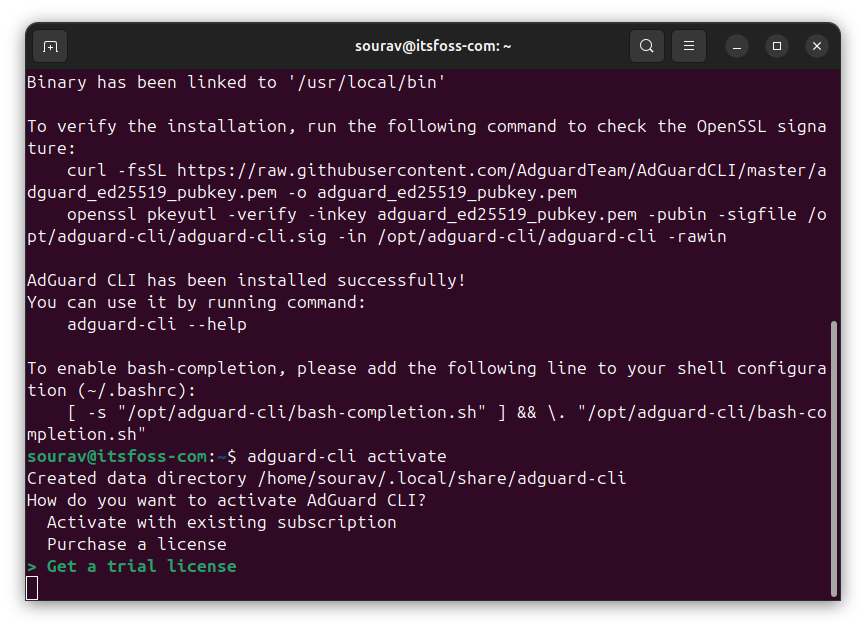
The developers of AdGuard (partner link) have put in the work for a proper Linux release with a broad range of features being made available.
Compared to the nightly release that dropped back in February, the stable release is finally here with new features and better performance.
Let’s dive straight in.
AdGuard for Linux: What to Expect?

Unlike in other OSes like Windows and macOS, AdGuard is not offering a full graphical user interface (GUI), but a command line interface (CLI) on Linux. The terminal junkies in the house will like this.
We start with the new App Exclusion feature, where users can bypass AdGuard filtering for specific applications or browsers where they don't need ad-blocking. This can be useful in cases where applications misbehave or glitch out when AdGuard is enabled.
It also comes equipped with two pre-built lists of browsers and applications that can be excluded from HTTPS filtering. This simplifies the exclusion process without requiring much manual effort from the user.
Similarly, AdGuard for Linux now introduces an Interactive Setup Wizard, which enables an effortless initial configuration experience. This reduces effort for the user, who had to go through the documentation to get AdGuard installed.
And, during filter updates, AdGuard now retrieves only freshly upgraded portions of the filter lists rather than downloading the whole list every time. This optimized approach minimizes network usage while keeping all the filtering rules updated.
Seeing as we are on the topic, users can now manage filters with much more flexibility. In addition to adding filters from AdGuard’s official list or custom URLs, they can enable or disable specific filters as needed, or remove them entirely.
Lastly, AdGuard for Linux now supports both SOCKS5 and HTTP proxy modes, along with automatic proxy reloads whenever new filters or configurations are applied. This ensures that updates to blocklists, settings, or proxy rules take effect immediately—keeping tracker blocking consistently up to date without any gaps in protection or extra effort from the user.
For a more detailed overview of the changes, I recommend you go through the official blog.
How to Install AdGuard for Linux?
You can get AdGuard installed on your Linux system by following these steps. First, install the latest AdGuard version using the terminal:
curl -fsSL https://raw.githubusercontent.com/AdguardTeam/AdGuardCLI/release/install.sh | sh -s -- -v
When prompted, enter your account password, wait for the download to complete, press y, and then the Enter key. Now, enter the following command to begin the AdGuard activation process:
adguard-cli activate
Use the arrow keys to select the desired option; go with "Get a trial license" if you just want to check out AdGuard. You will have to create an account and log in using the provided link (open it in a browser).
Thereafter, run the configuration wizard and follow the on-screen prompts:
adguard-cli configureNow, use the following command to start AdGuard:
adguard-cli startYou can stop AdGuard protection or check its status by using one of the following commands:
adguard-cli stopadguard-cli statusVisit the AdGuard for Linux webpage or the documentation if you need more pointers regarding installation.
Suggested Read 📖

- Even the biggest players in the Linux world don't care about desktop Linux users. We do.
- We don't put informational content behind paywall. Your support keeps it open for everyone. Think of it like 'pay it forward'.
- Don't like ads? With the Plus membership, you get an ad-free reading experience.
- When millions of AI-generated content is being published daily, you read and learn from real human Linux users.
- It costs just $2 a month, less than the cost of your favorite burger.
Become a Plus Member today and join over 300 people in supporting our work.











